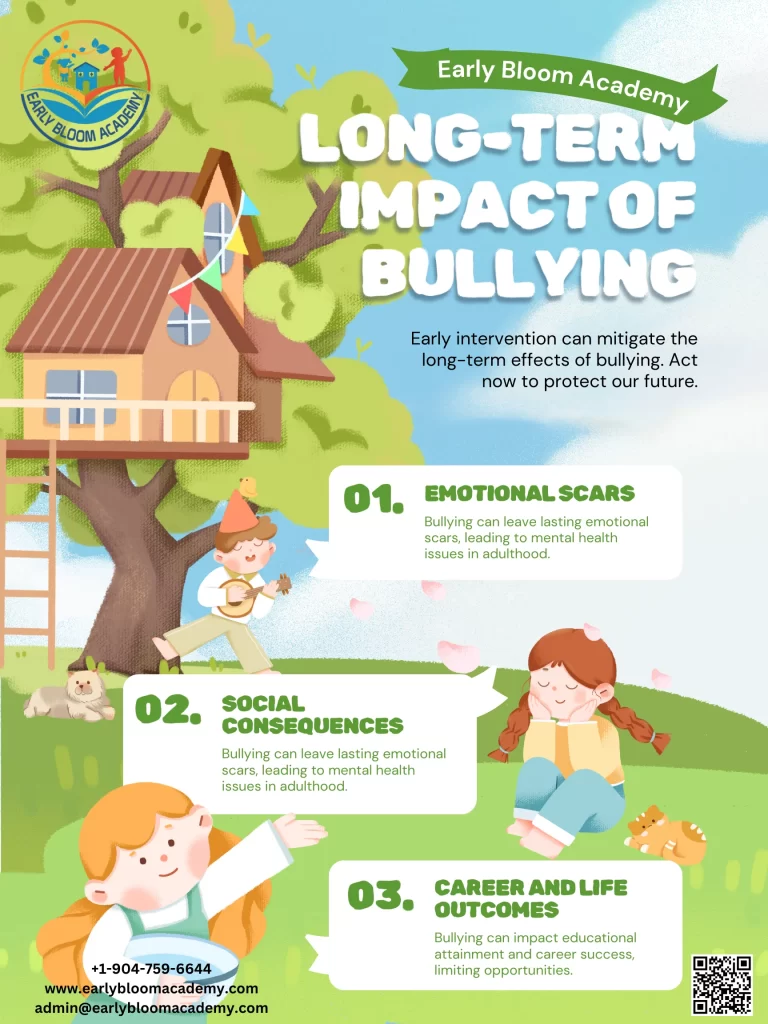October is dedicated to Bullying Prevention Month. The truth is, preventing bullying starts much, much earlier. In preschool, it’s not about kids intentionally hurting each other; they’re just beginning to figure out how to navigate big feelings and new friendships. It’s too soon for anything like cyberbullying, but you’ll definitely see disagreements and moments of frustration.
At Early Bloom Academy, we believe in giving little ones the foundational skills they need to thrive, both in the classroom and in life. As they grow with us, we gently guide them in vital anti-bullying skills: learning to pause and think before they act, understanding and managing their emotions, figuring out how to solve problems with friends, and being flexible when things don’t go their way. These are the building blocks that help children manage friendships, work through conflicts, develop a strong sense of who they are, and build confidence – all fantastic bully-busting qualities!
While “bullying” can sound serious, there are so many fun and engaging ways to help your preschooler develop a healthy self-image and a genuine respect for everyone around them. Here are five simple activities you can try at home or with friends to help stop bullying before it ever has a chance to start:
Play “Guess Who?”
This classic game is a wonderful way to teach children to notice and appreciate what makes each person unique. Start by describing someone you both know, focusing on their favorite toy, the color of their hair, or something else simple. As your child guesses, you can gently introduce the idea that everyone has special qualities, and that’s what makes us all so wonderfully different.
Craft Family Portraits
Gather your child’s favorite art supplies and invite them to draw pictures of different families in your life, including your own. As you create, talk openly about the similarities and differences between your friends’ families and your own. Point out how each family brings something special to your lives. The beautiful takeaway? No matter how families might look different, love is always at their heart.
Chart Similarities and Differences
Differences are truly beautiful! This activity helps your child recognize and embrace what makes everyone unique, while also introducing some basic math concepts. Together, create a simple chart of characteristics, hobbies, or traits (like: “tall,” “funny,” “wears glasses,” “speaks Spanish,” “loves donuts,” etc.). You’ll see how all the people in your life add rich variety to your community, and how each person shines in their own special way.
Imagine Being Someone Else
Pretend play is a powerhouse for building empathy! When children imagine themselves as someone else (or even the family pet!), they’re stepping into the hearts and minds of others, which helps them see the world from a brand new perspective. The best part? Kids don’t need much to start pretending – just their imaginations! Dress-up clothes, household items, or even empty boxes can spark all kinds of adventures. And don’t forget, you were a child once too, so join in the fun and watch the magic unfold!
Help Give Back to Your Community
A strong community thrives when its members support each other. One impactful way to help your child understand this is by showing them their role as a helper. Young children naturally love to assist, so channel that energy into action! Brainstorm a list of ways they can show kindness and lift up family members, friends, or even classmates. Chat with your child about how their actions, big or small, help build a community where everyone feels safe and belongs.


